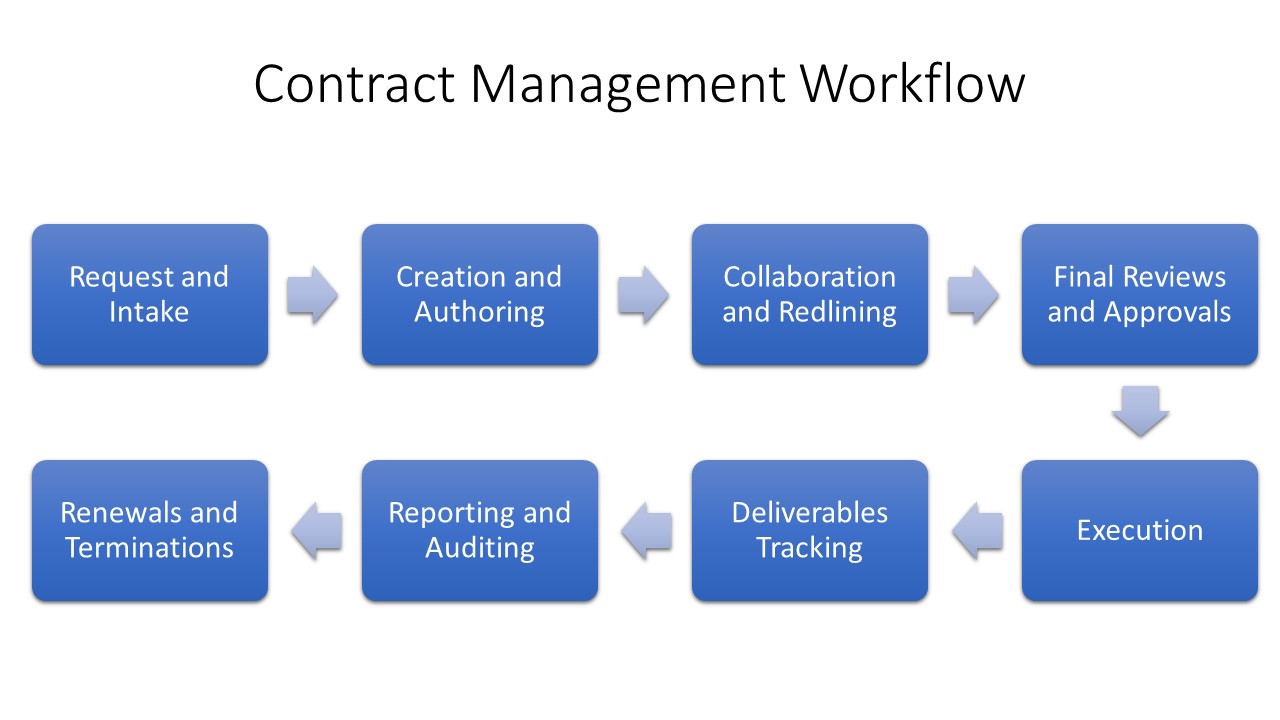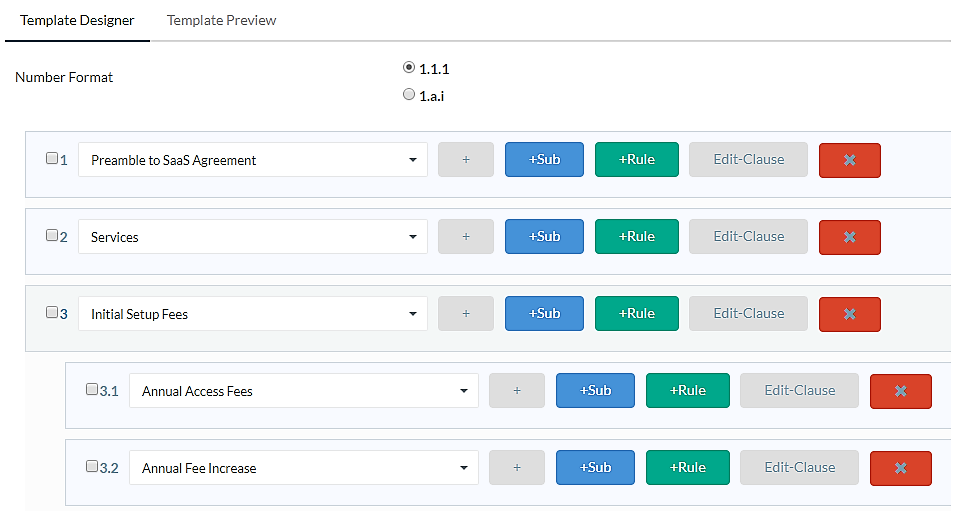8 Keys to an Effective CLM Workflow
How effective is your organization’s CLM workflow? An effective contract workflow helps your organization operate smoothly and efficiently. An ineffective workflow can hobble your organization, holding up important decisions and damaging relationships with customers and suppliers.
How can your organization create a more effective CLM workflow? Here are eight best practices to follow.
Key Takeaways
- An effective contract management workflow helps your organization operate more efficiently and more profitably
- To improve your contract management workflow, assign key responsibilities to specific stakeholders, generate new contracts from templates, and store your contracts in a central repository
- You should also define the approval process, employ e-signatures, and set up automatic reminders for expiring contracts
- You can also use analytics to help improve your workflow and automate the entire process with contract lifecycle management software
Why an Effective CLM Workflow Is Important
Contracts are the lifeblood of most organizations. Research shows that contracts govern 70-80% of business operations today. The more effectively you can move contracts through your system, the more effectively you can manage your business.

When your CLM workflow is slow and inefficient, business operations can grind to a halt. You’re constantly waiting for someone to review or approve a given contract, or you’re spending hours tracking down exactly where a contract is in the process.
In contrast, an efficient and effective contract workflow results in many benefits to your organization, including:
- Less time spent creating contracts
- Less time spent managing the approval process
- Less time spent tracking down signatures
- More standardization
- Greater legal and regulatory compliance
- Fewer errors
- Lower costs
8 Ways to Improve CLM Workflow
Creating an effective contract management workflow requires an investment in time and, perhaps, money. The work you do upfront should result in a faster, more accurate, less costly contract workflow.
What type of planning do you need to do? Here are eight ways you can improve your organization’s contract management workflow.
1. Assign Stakeholders to Specific Roles
Every person and team involved in the contract management process needs to know what they’re responsible for. Conversely, each step in the process needs to have someone in charge of it. That means identifying key stakeholders and assigning each to specific roles in the process. Make sure that all roles are covered—don’t leave any important step without someone responsible.
Not only do those responsible need to know what they’re responsible for, but everyone involved in the process needs to know who owns each part. If your legal team is responsible for final contract approval, for example, everyone needs to know that so that every contract goes through legal to get approved.
2. Generate New Contracts from Templates
Your organization’s contract workflow can go much smoother if you start each contract from a preapproved, predesigned contract template and clause library. Instead of having individuals or teams write each new contract from scratch, it’s a lot easier to construct a contract from building blocks others have put together in advance.

With a contract clause and template library, you start with “good bones”—contract language, terms, and clauses that key stakeholders have already approved. You leave nothing to chance: legal, compliance and other responsible teams have vetted the templates. When you start a new contract, all you have to do is fill in the blanks, so to speak, regarding parties involved, products or services involved, due dates, and negotiated terms. Everything else is standardized and preapproved, which helps speed the negotiation, redlining, and approval processes.
3. Store Your Contracts in a Central Repository
Many organizations comprise isolated departmental silos. In a siloed environment, contracts can initiate anywhere and seldom flow through a proper approval process. That results in nonstandard and often non-compliant contracts and an extremely inefficient workflow. It also hinders the ability to find specific contracts and information in those contracts. According to Ernst & Young, 90% of professionals say they have difficulty trying to locate contracts in their organizations.
A better approach is centralizing all your contracts and supporting documents in a single contract repository. This way, you know where every contract resides, making it easier to circulate an in-process contract and access executed contracts. Breaking down silos to centralize your contracts also gives you more control over the entire process and provides enhanced security for the contracts you store.
4. Define the Approval Process
As part of your organization’s overall contract workflow, you need a specific workflow for contract approvals. Even if you maintain decentralized contract creation, it’s still essential that all contracts—no matter where they initiated—flow through a set group of departments or individuals to be approved.
Your contract approval workflow should include departmental and often senior management and the legal department. Everyone involved in creating and negotiating contracts must know how this approval process works and who is involved. No one should execute any contract until the designated staff has properly approved it.
5. Speed Up Contract Execution with E-signatures
Another way to create a more efficient CLM workflow is to speed up the execution process. Circulating paper copies for management to sign manually is time-consuming, especially if the individuals doing the signing are traveling or otherwise occupied. A better approach is to use e-signatures that take just seconds to execute and can be signed on any device from any location. E-signatures are also easier to route, track, and manage—and help keep your contracts electronically secure. (They’re also legally binding, as the following video explains.)
SOURCE: E-Sign via YouTube
6. Automate Renewal Reminders
Once all parties have signed a contract, it’s still active until it expires. Then you’re faced with the question of what do you do when a contract is due to expire—do you let it expire, automatically renew it, or try to renegotiate it?
Those options are moot if your current contract management system doesn’t track contract renewals. It’s easy to let expiring contracts slip if you have no way of knowing what contracts are nearing their end.
A more effective approach is to set up automatic reminders of expiring contracts, ideally several months before the end date. That way, you’ll know what contracts are expiring and have time to evaluate their performance to date. You’ll also have time to renew those worth renewing and renegotiate those where you can get better terms.
7. Employ Analytics to Continually Improve the Process
Which of your contracts is performing to plan, which are overperforming, and which are underperforming? With the right contract management software system, you’ll know which are your best and which are your worst contracts. You’ll also know how your workflow functions—where the bottlenecks are and where you need to improve. It’s all about gathering and analyzing the available data to continually improve your work.
8. Automate the Entire Contract Process
Finally, automating the entire process is the most important key to an effective contract management workflow. You do this with contract lifestyle management (CLM) software, like that offered by Contract Logix. A full-featured CLM solution includes everything you need to streamline your contract management workflow, including:
- The ability to predesign contract templates
- A library of preapproved terms and clauses
- Automated contract routing
- Centralized digital contract repository
- E-signatures
- Automated notification of deliverable deadlines and contract expirations
- Robust reporting and in-depth analytics
In short, if you want to improve the effectiveness of your contract management workflow, do it automatically with a full-featured CLM solution.
Let Contract Logix Improve Your Organization’s CLM Workflow
Creating an effective contract management workflow should be a high priority for any organization. When you want to improve your contract workflow, turn to the experts at Contract Logix. Our CLM Platform automates the entire contract management process, from initiation to expiration, which helps you work faster and more effectively.
Contact Contract Logix today to learn more about creating a more effective CLM workflow.
Looking for more articles about Contract Management? Check out our previous article “What Is Contract Management Software?“.


